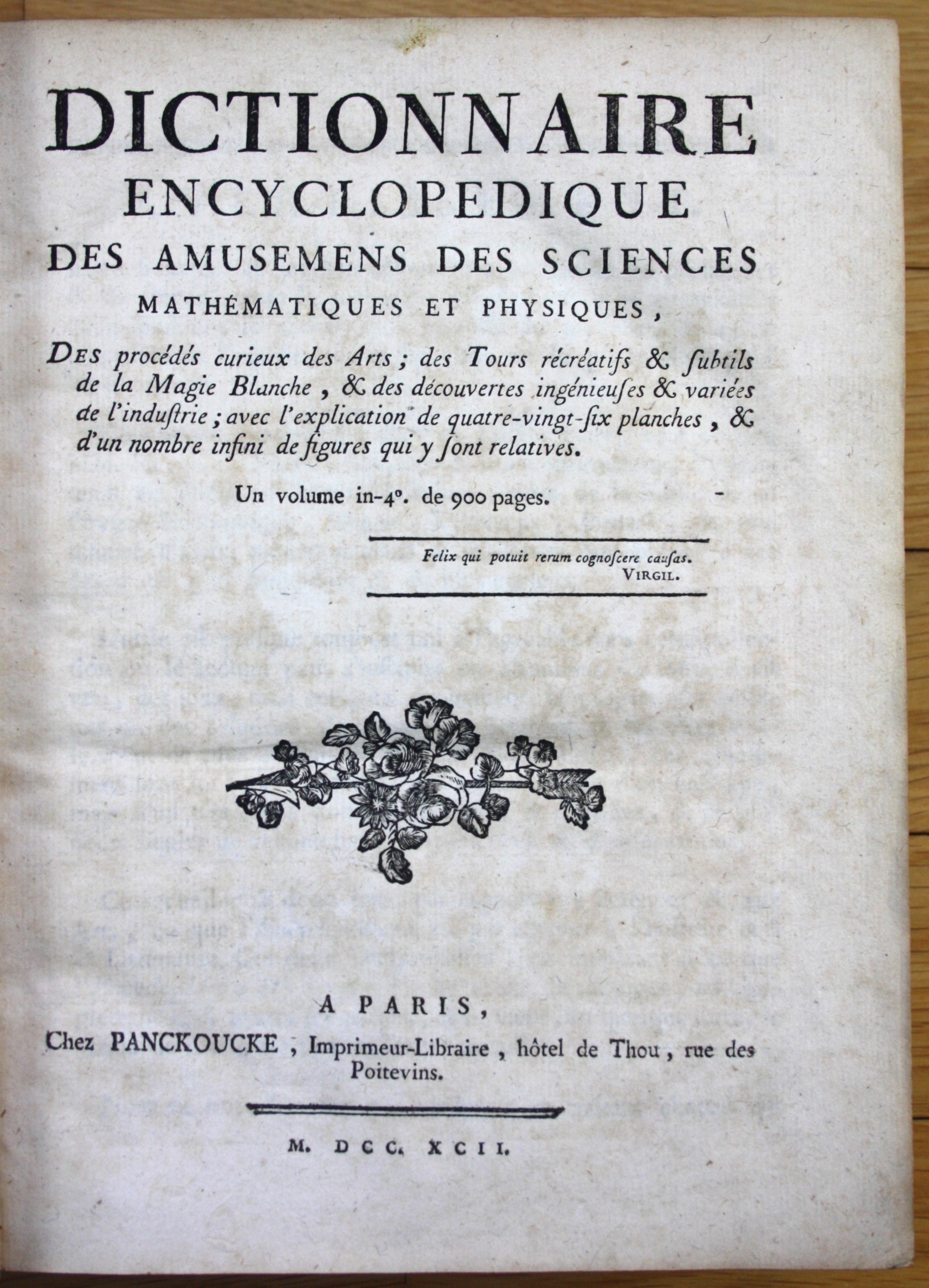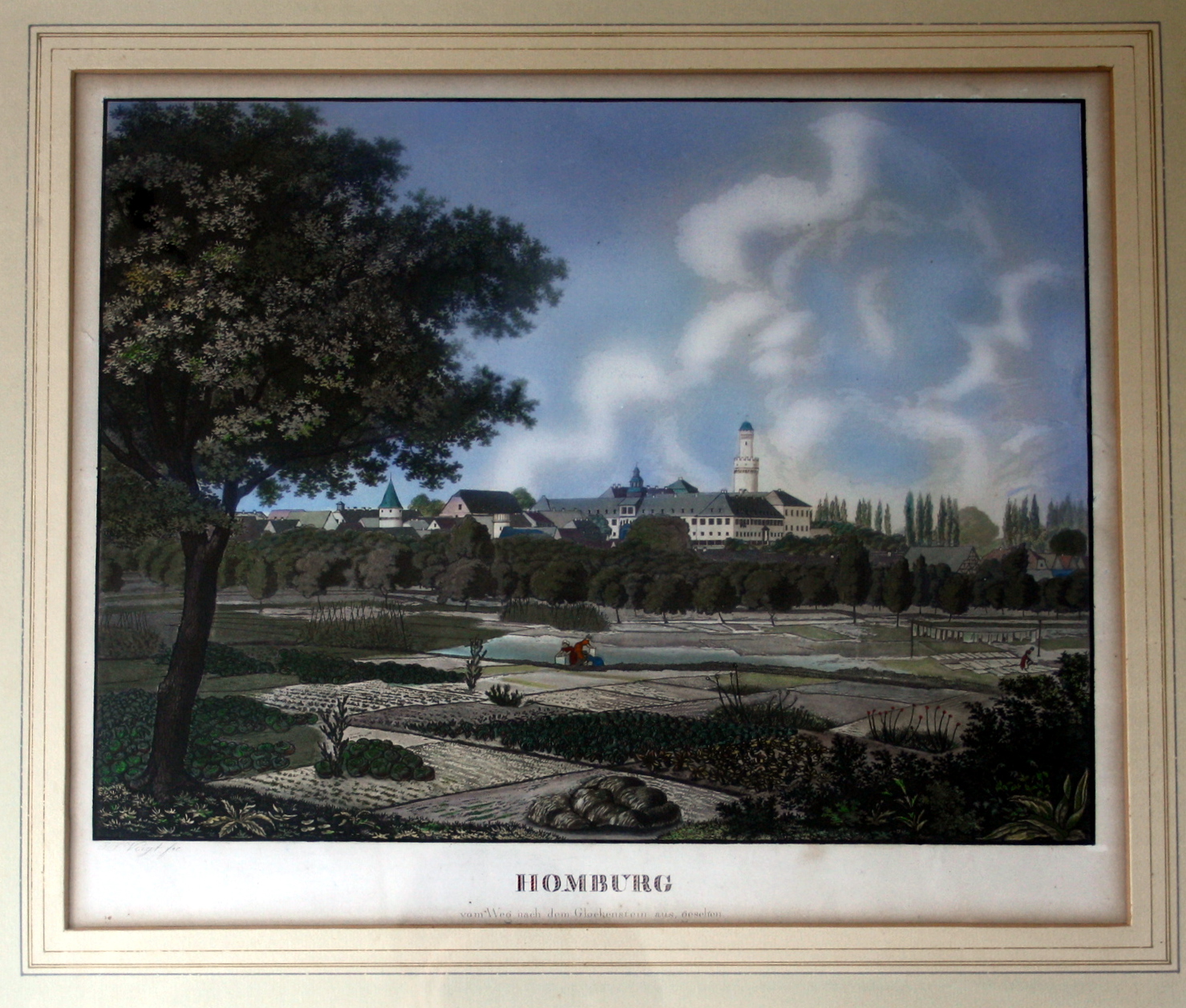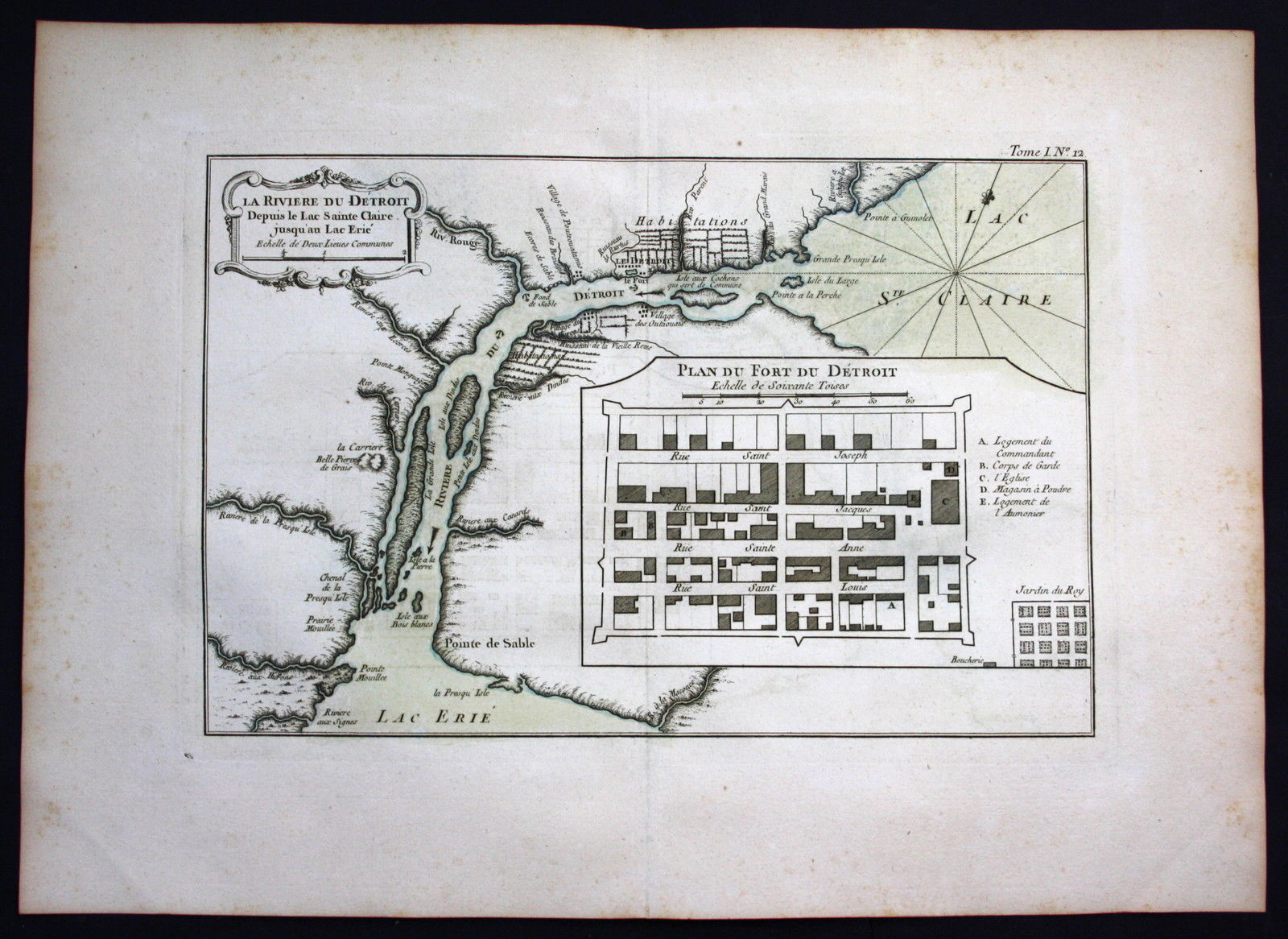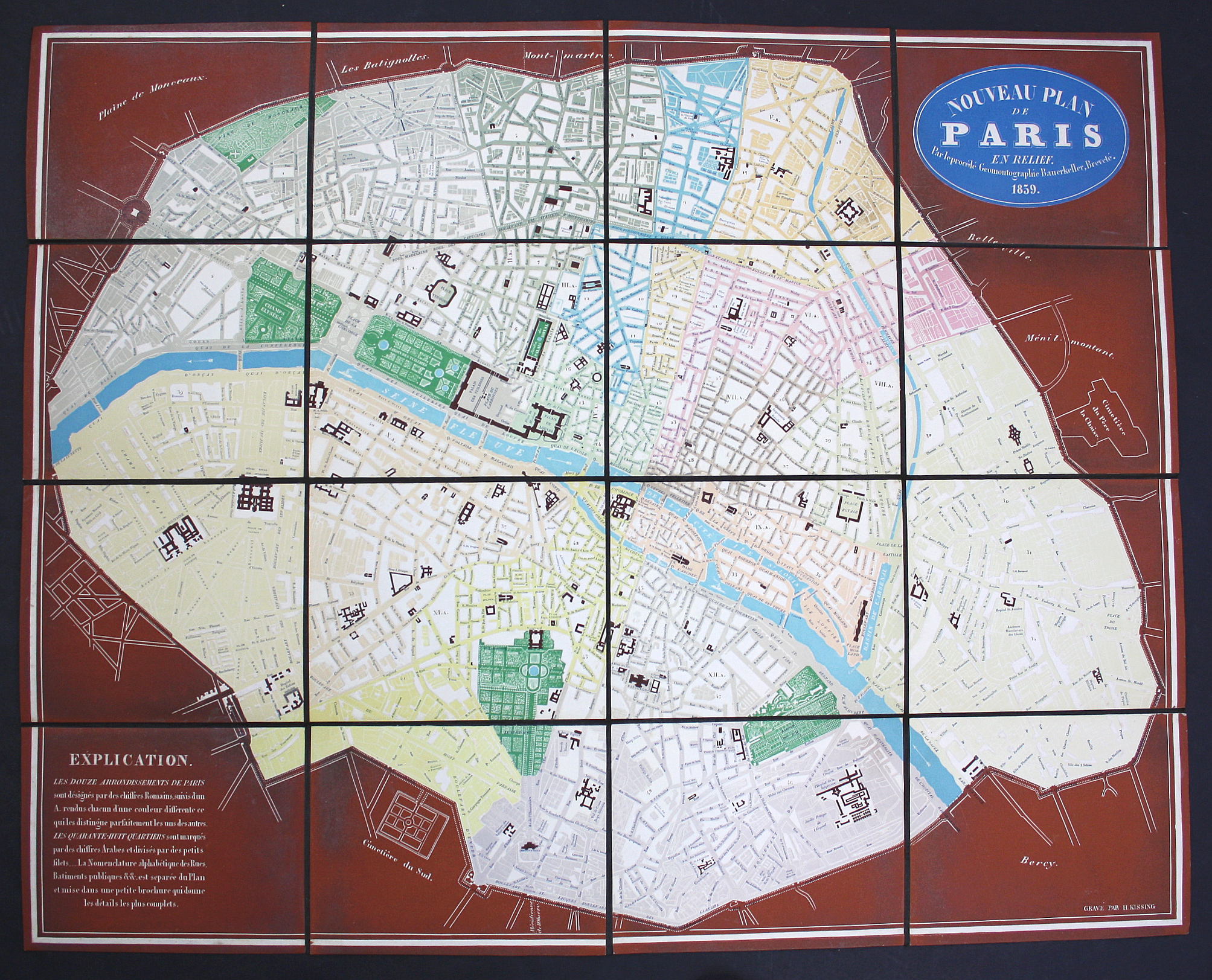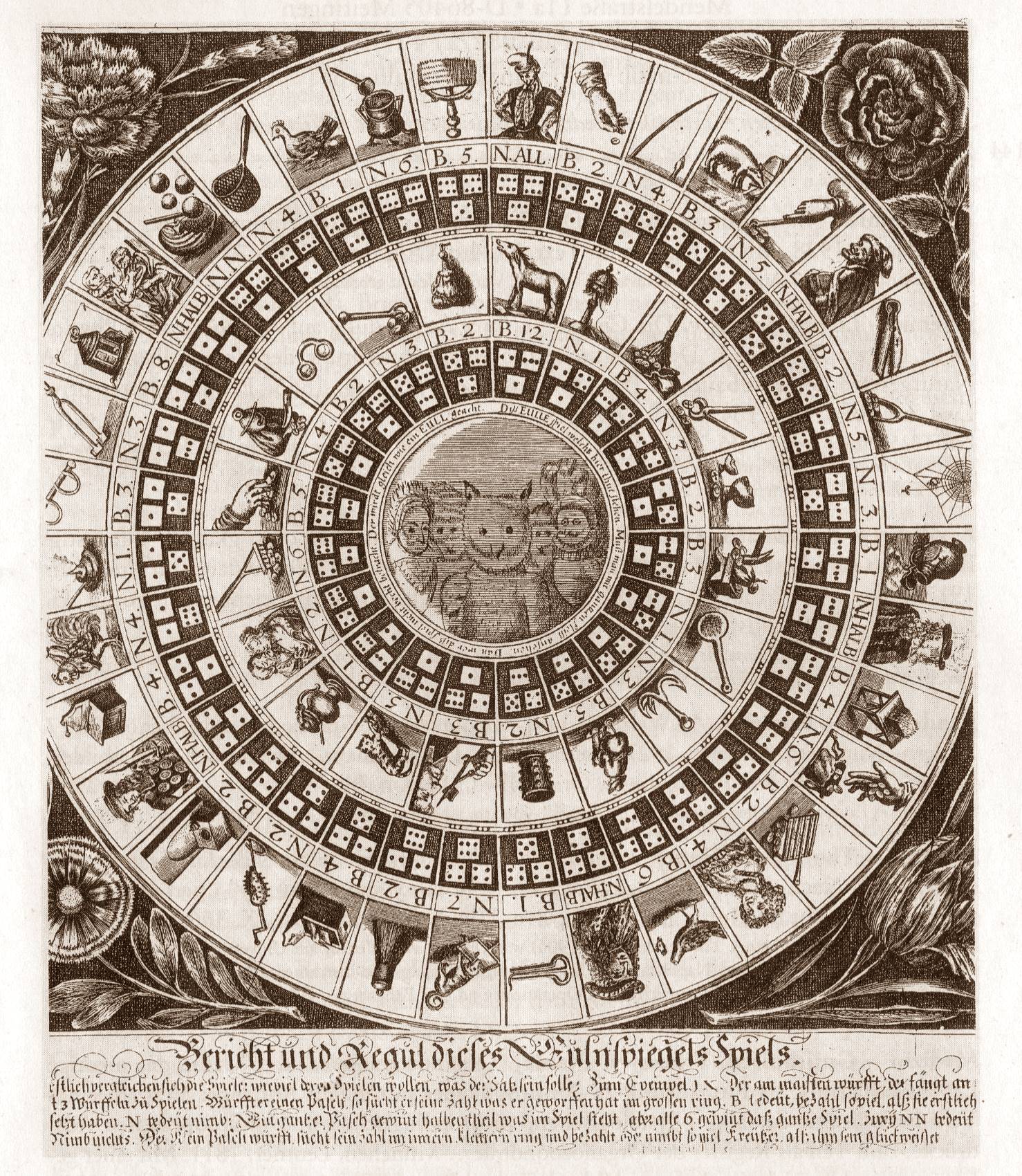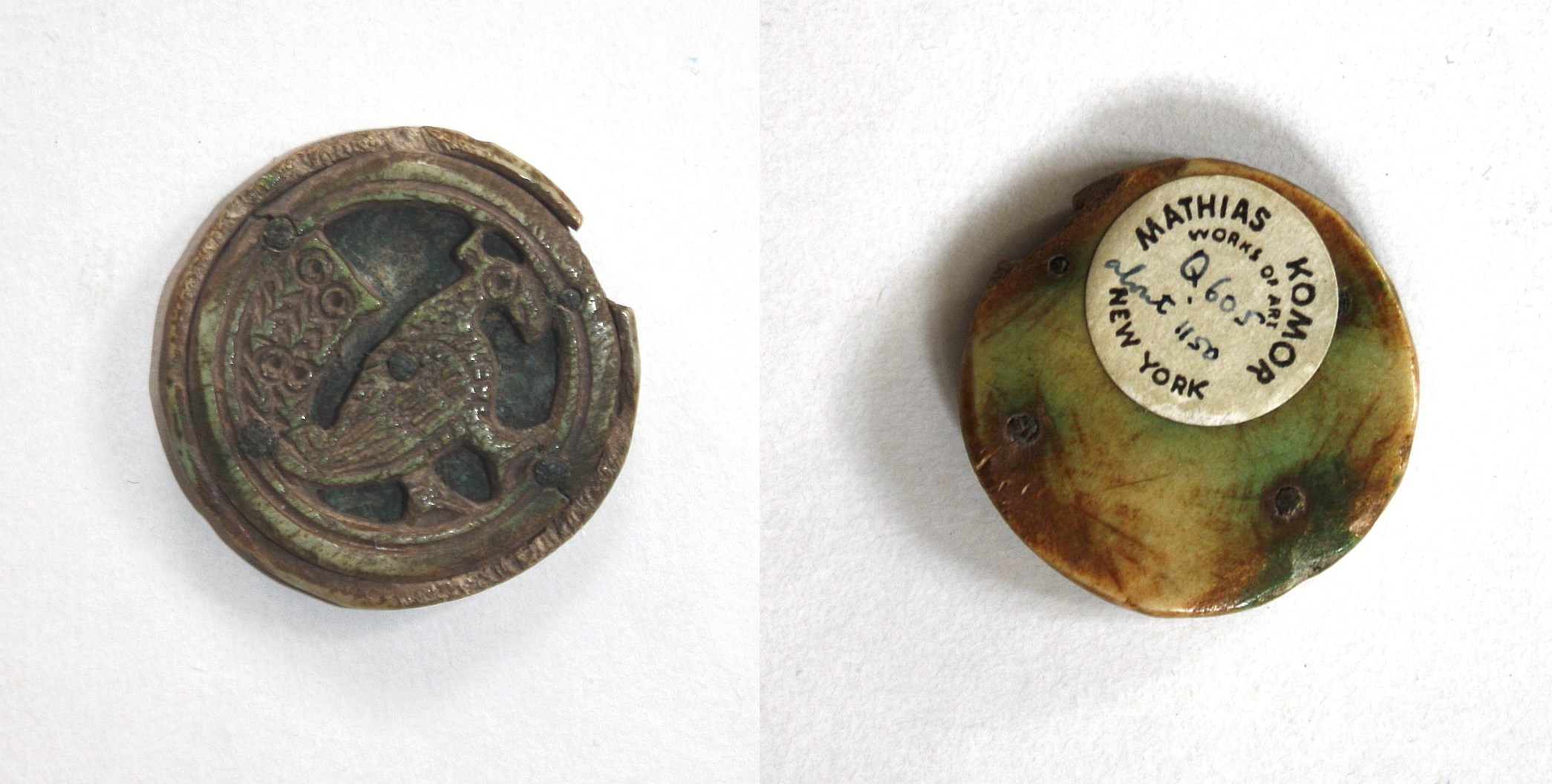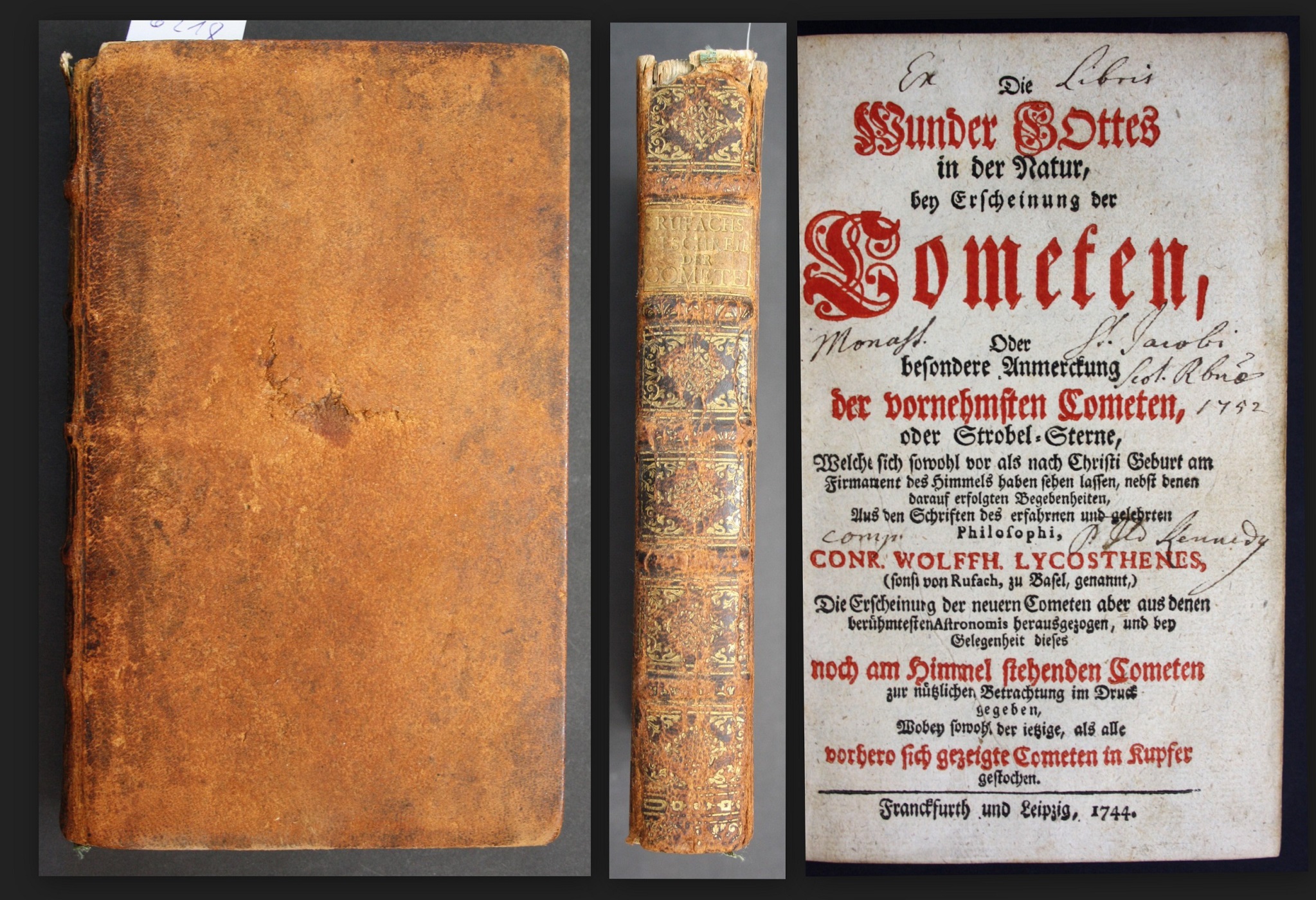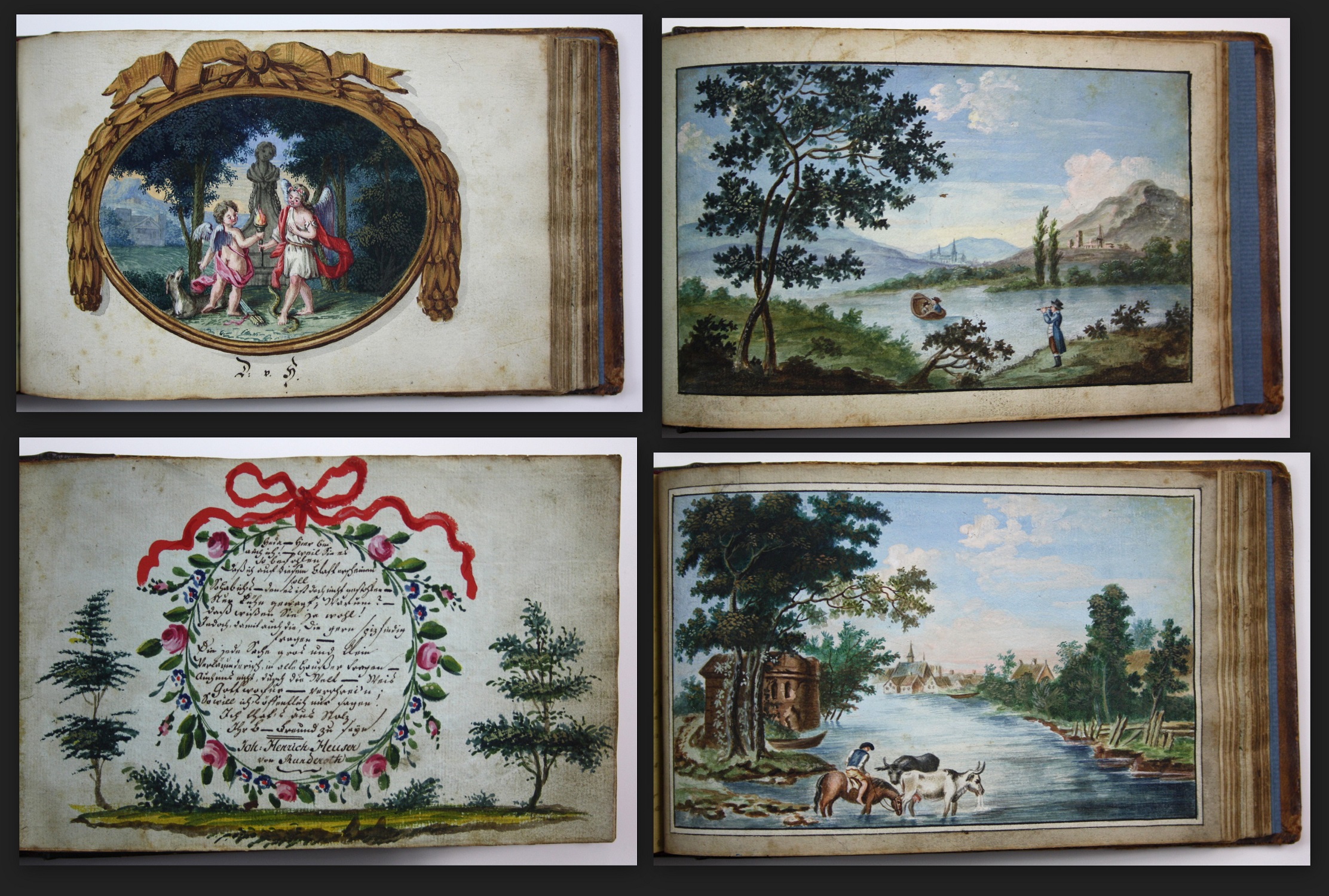Egid Schor (Innsbruck 1627 – 1701 Innsbruck)
Design for the ceiling painting at the Galleria Colonna (c. 1664-1665).
Pen, black ink and watercolor on two pieces of paper mounted together ; 252 x 448mm.
Johann Paul Schor (1615-1674) was engaged as a painter of the Galleria Colonna. From 1665 he frescoed the complete north side of the vault. His son Philipp was also involved in the elaboration of the fresco. The present newly discovered drawings prove that Johann Paul’s brother Egid Schor was likewise involved in the execution. Thus, the north side of the ceiling painting in the Galleria Colonna were obviously a joint project of the Schor family.
Egid Schor came from a well-known Tyrolian artist family. He was the elder brother of Johann Paul and followed him to Rome. In his Roman years, Egid worked with Johann Paul on several projects, for example at the Quirinal Palace and the Villa Chigi in Formello. He came in contact with Gian Lorenzo Bernini and Pietro da Cortona and was able to study the work of Andrea Pozzo. In 1665, he returned home. During the following years he worked as a decoration painter in Salzburg, Linz, Vienna, Munich, Nuremberg and Augsburg. After Egid’s return to Innsbruck, Charles V, Duke of Lorraine appointed him court painter. Due to the transfer of illusionistic ceiling painting from Italy to his homeland, Egid Schor is considered the founder of Baroque ceiling painting in Tyrol.
Johann Paul Schor first studied with his father, settled in Rome in 1640 and became a pupil of Pietro da Cortona (1596-1669) and Gian Lorenzo Bernini (1598-1680). In 1654 Schor became a member of the Academy of Fine Arts Accademia di San Luca and obtained the favor of Pope Alexander VII, on whose behalf he was frequently active. Together with his brother Egid he was involved in the decorative painting of the Quirinal Palace, and he helped Bernini with the Chair of Saint Peter in St. Peter’s Basilica. He executed paintings in the Papal summer residence Castel Gandolfo, in the Vatican as well as in the Palazzo Borghese. From 1655 Bernini participated Schor in almost all of his papal assignments. Bernini’s praise, which he gave Schor, as well as the sometimes confusingly similar graphic style of the two artists, testify to their close ties. Schor’s main occupation, however, was decorative painting. He designed ornaments for architecture, theater scenes, show cars and staged pompous festivals, including for the Colonna and the Borghese. After Schor’s death in 1674, his studio was continued by his sons Philip and Christoph. Schor was one of the chief designers for the Colonna family and enjoyed a high esteem from Bernini and Colonna. He was one of the most sought after artists in Rome at that time. Many of his works were previously attributed to Bernini.
The design contains some striking deviations from the executed fresco. There are only two instead of six Oriental figures, the siren figure on the left side rides on two horses, the ship’s bow has a rather different form and on the actual fresco two more putti holding the large curtain.
It can be assumed that, according to these figurative differences, the drawing was created at the beginning of the working process, that is, even before the beginning of the work on the fresco in the spring of 1665.
Pietro da Cortona’s ceiling painting for the Galleria Pamphilj was one of the models for Schor’s fresco in the Galleria Colonna. In this context, a related drawing is of some importance, which is most probably a copy of one of Cortona’s designs for the Galleria Pamphilj and could have been made as a template for Schor’s own designs for the Galleria Colonna, confirming Cortona’s influence on Schor.
The present drawing is of outstanding importance. Together with the other drawing from the same series, they are the only known designs for the ceiling painting in the Galleria Colonna. They prove that Egid Schor had a central part in the design, also providing new insights into the creative process of one of the most important Italian ceiling paintings of the 17th century.
Provenance: private collection
__________________________________________________________________________________________
Entwurf einer Eckdekoration für das Deckengemälde in der Galleria Colonna. (um 1664-1665)
Feder, schwarze Tinte und Aquarell auf zwei zusammen montierten Blättern; 252 x 448 mm.
Im Jahre 1665 erhielt Johann Paul Schor (1615-1674) den Auftrag, das Fresko an der Nordseite des Gewölbes in der Galleria Colonna zu malen. Sein Sohn Philipp war ebenfalls an der Ausarbeitung des Freskos beteiligt. Die vorliegende neu entdeckten Zeichnung belegt, dass auch Johann Pauls Bruder Egid Schor an der Ausführung beteiligt war. Die Nordseite des Deckengemäldes in der Galleria Colonna war offensichtlich ein Gemeinschaftsprojekt der Familie Schor.
Egid Schor stammte aus einer bekannten Tiroler Künstlerfamilie. Er war der ältere Bruder von Johann Paul und folgte ihm nach Rom. In den Jahren in Rom arbeitete Egid mit seinem Bruder Johann Paul an mehreren Projekten, zum Beispiel im Quirinal Palace und in der Villa Chigi in Formello. Er kam mit Gian Lorenzo Bernini und Pietro da Cortona in Kontakt und konnte die Arbeit von Andrea Pozzo studieren. 1665 kehrte er nach Hause zurück. In den folgenden Jahren arbeitete er als Dekorationsmaler in Salzburg, Linz, Wien, München, Nürnberg und Augsburg. Nach Egids Rückkehr nach Innsbruck ernannte ihn Karl V., Herzog von Lothringen, zum Hofmaler. Aufgrund der Übertragung der illusionistischen Deckenmalerei von Italien in seine Heimat gilt Egid Schor als Begründer der barocken Deckenmalerei in Tirol.
Johann Paul Schor studierte zunächst bei seinem Vater, ließ sich 1640 in Rom nieder und wurde Schüler von Pietro da Cortona (1596-1669) und Gian Lorenzo Bernini (1598-1680). 1654 wurde er Mitglied der Akademie der bildenden Künste der Accademia di San Luca und erhielt die Gunst von Papst Alexander VII, in dessen Auftrag er häufig tätig war. Zusammen mit seinem Bruder Egid war er an der dekorativen Malerei des Quirinalpalastes beteiligt und half Bernini mit dem Stuhl des Heiligen Petrus im Petersdom. Er fertigte Gemälde in der päpstlichen Sommerresidenz Castel Gandolfo, im Vatikan sowie im Palazzo Borghese an. Ab 1655 half ihm Bernini bei fast allen seinen päpstlichen Aufträgen. Berninis Lob für Schor, sowie der manchmal ziemlich ähnliche Zeichenstil der beiden Künstler, zeugen von ihrer engen Verbundenheit. Schors Hauptbeschäftigung war jedoch die Dekorationsmalerei. Er entwarf Ornamente für Architektur, Theaterszenen, Festwägen und inszenierte pompöse Feste, u.a. für die Familien Colonna und Borghese. Nach Johann Pauls Tod im Jahr 1674 wurde sein Atelier von seinen Söhnen Philip und Christoph weitergeführt. Johann Paul Schor war einer der Hauptdesigner der Familie Colonna und wurde von Bernini und Colonna hoch geschätzt. Er war zu seiner Zeit einer der gefragtesten Künstler in Rom. Viele seiner Werke wurden früher Bernini zugeschrieben.
Die vorliegende Entwurfszeichnung enthält einige Abweichungen zum ausgeführten Fresko. Es gibt nur zwei statt sechs orientalische Figuren, die Sirenenfigur auf der linken Seite reitet auf zwei Pferden, der Schiffsbogen hat eine etwas andere Form und auf dem eigentlichen Fresko gibt es zwei zusätzliche Putten, die den großen Vorhang halten. Aufgrund dieser Unterschiede kann man davon ausgehen, dass die Zeichnung vom Beginn des Arbeitsprozesses stammt, also noch vor Beginn der Arbeit am eigentlichen Fresko im Frühjahr 1665.
Die vorliegende Zeichnung ist von großer Bedeutung. Zusammen mit der anderen Zeichnung aus derselben Serie sind sie die einzigen bekannten Entwürfe für das Deckengemälde in der Galleria Colonna. Sie zeigen, dass Egid Schor eine zentrale Rolle bei der Gestaltung der Freskomalerei in der Galleria Colonna gespielt hat und bieten zudem neue Einblicke in den kreativen Prozess eines der wichtigsten italienischen Deckengemälde des 17. Jahrhunderts.
Provenienz: Privatsammlung
Bibliography: Christina Strunck – Johann Paul Schor, capo disegnatore della famiglia Colonna. Nuove piste di ricerca (in: Il carro d’oro di Johann Paul Schor. L’effimero splendore dei Carnevali Barocchi. 2019); Christina Strunck – Berninis unbekanntes Meisterwerk. Die Galleria Colonna in Rom und die Kunstpatronage des Römischen Uradels. Munich, 2007; Silvia Carola Dobler – Egid Schor. Der Transfer illusionistischer Barockmalerei von Süden nach Norden. Innsbruck, 2012; Steffi Roettgen – Wandmalerei in Italien. Barock und Aufklärung 1600-1800. München, 2007
Acknowledgments: We sincerely thank Christina Strunck for helping us with the attribution of the drawings.
sold/verkauft






